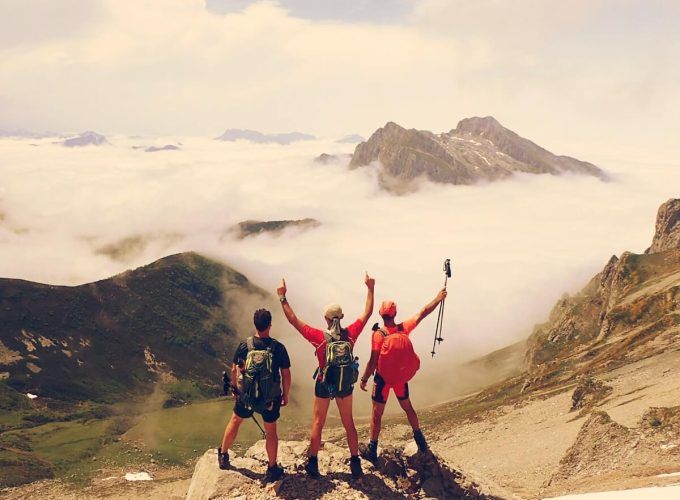Walking in Picos de Europa
The Picos de Europa National Park is the second most visited in Spain and one of the most breathtaking natural wonders in the country. Known for its dramatic white limestone peaks and lush green valleys, this protected area is a paradise for hikers and nature lovers. Located on the border between Asturias and León, the park is less than 30 km from the sea, making it one of the few places where sailors can admire towering mountain peaks while approaching the coastline.
The Unique Charm of Picos de Europa
Explore the Stunning Mountains of Northern Spain
As part of the mountains in northern Spain, the Picos de Europa National Park is not vast in area, but its dramatic elevations make up for it. It was the first national park designated in Spain in 1918, initially covering only the Peña Santa Ana massif. In 1995, the entire Picos de Europa range was officially protected as a national park.
The stunning white limestone rock formations have captivated civilizations for centuries, from the Celts and Romans to modern-day adventurers. The park’s most famous peaks include Torre Cerredo, the highest at 2,650 meters, and Naranjo de Bulnes, also known as Picu Uriellu, with its distinctive and iconic shape that makes it one of the most recognizable landmarks in the region.
Picos de Europa: Europe’s Roof
Despite its name, Picos de Europa is not the highest mountain range in Spain or Europe. However, it offers some of the most breathtaking landscapes and a sense of peace that is hard to find elsewhere. Unlike the Pyrenees or the Alps, these mountains in northern Spain are often overlooked by tourists who don’t actively seek hiking or mountaineering destinations, making them a perfect retreat for those who want to escape the crowds.
Visitors can choose their level of adventure, from easy scenic walks to challenging rock climbs. Whether you prefer to take in the panoramic views or push yourself to the limit, the Picos de Europa National Park has something for everyone.
Naranjo de Bulnes: The Iconic Peak
One of the most famous peaks in Picos de Europa is Naranjo de Bulnes, or Picu Uriellu. Located in the central massif, its distinctive monolithic shape stands out from the surrounding mountains, making it an unmissable sight.
For centuries, this peak has held cultural significance, with ancient Celtic tribes even considering it a sacred mountain. Today, it is a favorite destination for climbers and adventure seekers. Nearby, the remote village of Bulnes offers a unique experience for visitors. The village can only be reached on foot or by funicular, as no roads lead to this isolated yet picturesque location.
Wildlife in Picos de Europa
As a designated Biosphere Reserve, the Picos de Europa National Park is home to a rich and diverse ecosystem. The park supports a wide variety of wildlife, from small invertebrates to large predators.
Among the most notable species found here are:
- The Cantabrian Capercaillie (Urogallo) – A rare and elusive bird that inhabits the park’s forests.
- The Pyrenean Chamois (Rebeco) – A nimble mountain goat commonly seen in the park’s rocky terrain.
Other wildlife includes wolves, brown bears, golden eagles, falcons, and wildcats, adding to the incredible biodiversity of the region.
Discover Picos de Europa with Us
If you are looking to explore Picos de Europa, we offer the perfect guided experiences to help you uncover its natural beauty. Whether you’re an experienced hiker or a first-time visitor, our hiking tours in Picos de Europa are designed to suit every level and provide an unforgettable adventure. We also provide a special road trip through northern Spain that allows you to discover the best of the region’s landscapes, history, and culture.


